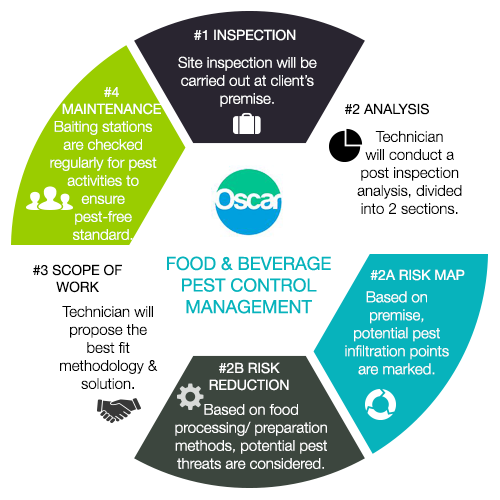The Function Of Bug Exterminators In Environmental Sustainability
The Function Of Bug Exterminators In Environmental Sustainability
Blog Article
Web Content Created By-Nguyen Sejersen
You could assume that parasite exterminators are only concerned with removing parasites, yet their duty exceeds that. They play a vital component in environmental sustainability.
By using incorporated pest administration strategies, they not just do away with pests but additionally safeguard biodiversity.
Furthermore, they use sustainable pest extermination methods to alleviate ecological threats.
So, next time you question the relevance of bug exterminators, remember their payment to a greener and much healthier earth.
The Significance of Integrated Parasite Administration
You should comprehend the value of incorporated insect monitoring in preserving a lasting environment.
Integrated Parasite Management (IPM) is a technique that concentrates on stopping and managing insects while lessening making use of harmful chemicals. By implementing IPM strategies, you can successfully take care of bug populations without causing damage to the setting.
One vital aspect of IPM is the use of organic controls, such as killers and parasites, to normally regulate pest populaces. This decreases the need for chemical pesticides, which can have harmful effects on wild animals and environments.
In addition, IPM promotes the use of social and physical controls, such as plant rotation and exemption strategies, to stop bugs from coming to be an issue to begin with.
Safeguarding Biodiversity Through Bug Control
We can guard biodiversity via reliable bug control approaches that prioritize the preservation of all-natural communities. By employing effective rat control strategies , we can protect and keep the fragile balance of varieties within our atmosphere. Below are three methods which bug control contributes to protecting biodiversity:
- ** Maintaining indigenous flora and fauna ** - By targeting invasive species that intimidate native plants and animals, insect control helps make sure the survival of indigenous varieties and keeps the natural diversity of ecosystems.
- ** Stopping the spread of diseases ** - Managing pests such as mosquitoes and ticks reduces the danger of illness infecting wildlife populaces, shielding biodiversity and stopping possible outbreaks.
- ** Saving threatened types ** - By managing bugs that victimize or compete with endangered types, pest control efforts can enhance the chances of survival and promote the recuperation of susceptible populaces.
Through responsible insect control approaches, we can actively contribute to the preservation of biodiversity and the sustainability of our natural world.
Mitigating Environmental Risks With Lasting Pest Extermination Approaches
By utilizing lasting parasite extermination techniques, you can successfully mitigate environmental dangers while guaranteeing the safety and health of both people and the natural environment. Traditional insect control approaches often entail the use of damaging chemicals that can have damaging impacts on the setting.
Nonetheless, sustainable bug elimination approaches concentrate on decreasing these risks by utilizing environmentally friendly alternatives. As an example, integrated pest management (IPM) approaches prioritize using safe and eco-friendly items, in addition to natural predators to manage pest populaces. This method not just minimizes the negative influence on the setting yet also aids to preserve the fragile equilibrium of the environment.
Additionally, lasting pest extermination techniques promote the conservation of biodiversity by targeting specific parasites without hurting helpful organisms. By adopting these approaches, you can add to a more lasting and environment-friendly method to pest control.
Final thought
You are the pest exterminator, the guardian of nature's consistency. With integrated pest management, you balance the fragile environment, ensuring the survival of diverse types.
Via lasting methods, you reduce ecological dangers, maintaining the fragile balance undamaged.
Like visit this weblink , you manage the rhythm and circulation, safeguarding the biodiversity that dances in ideal consistency.
With every step you take, you produce a world where nature thrives, where bugs retreat, and where sustainability reigns supreme.
